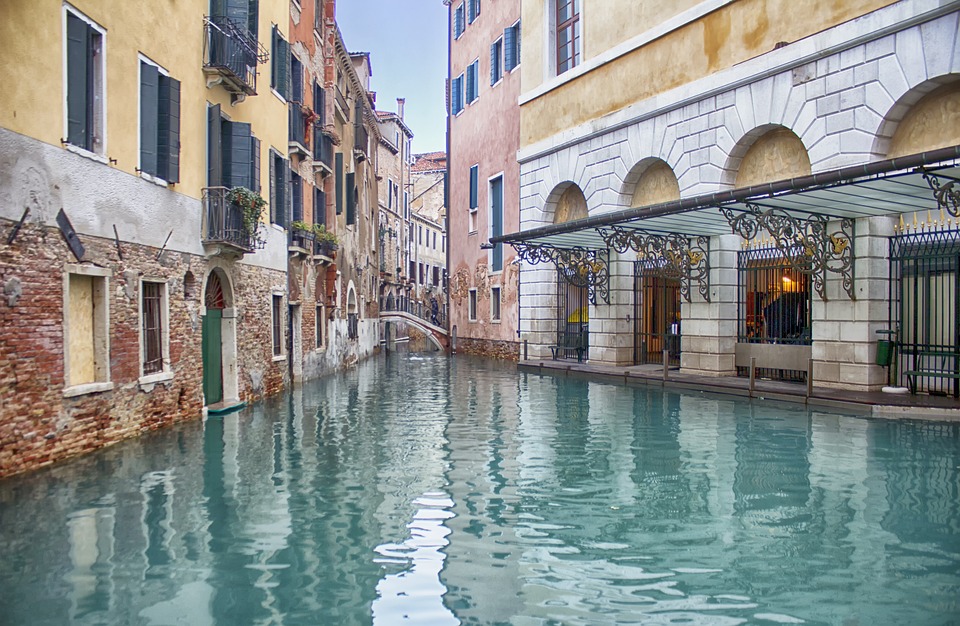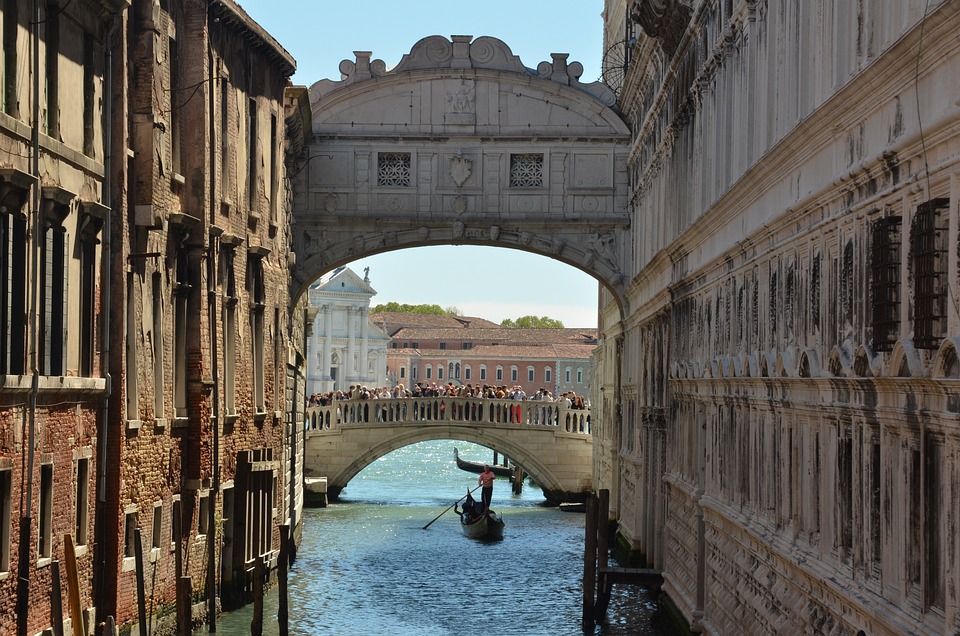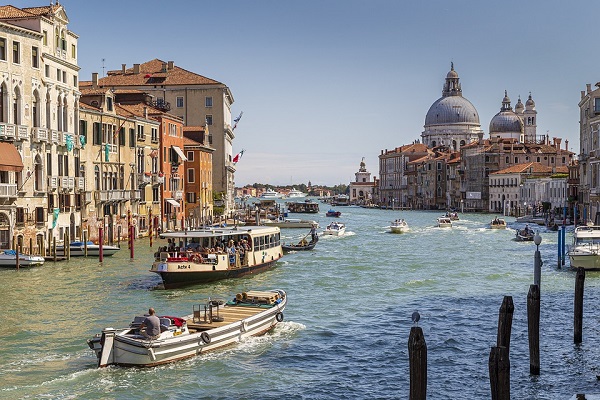Venice’s Canals Dry Up – Causes, Impacts, and More. Explained Simply
Written by Sthitee Mohanty, senior writer.
Venice’s iconic canals are drying up because of low tides caused by high-pressure conditions, among other reasons
Written by Sthitee Mohanty, senior writer.
Venice is a city in the northern part of – it’s actually the capital of the country’s Veneto region, and is built on more than 100 small islands. By Sthitee Mohanty, senior writer.
Written by Serene Joshua, contributing writer
Venice is a city in the northern part of – it’s actually the capital of the country’s Veneto region, and is built on more than 100 small islands.
Here’s what is special about Venice – it has no roads, just canals.
What’s happening now – a quick look
- Venice’s canals dry up because of low tides caused by high-pressure conditions
- Anticyclone over the Mediterranean and Adriatic Seas leads to a drop in water level
- Life in Venice is disrupted because of transportation problems
- Venice’s tourism industry may take a hit
- Locals worried about future predictions of drought-like conditions in Italy
More details…
Two primary issues are:
People can’t get from one place to another, as there are no cars in Venice and people travel in, what are called, gondolas (traditional, flat-bottomed rowing boats).
Those dependent on tourism, including the gondoliers (those who operate the gondolas), are having a tough time and are worried about the impacts of this.
Why are the canals in Venice drying up?

There are a few theories that are being considered..
Low tides. A high-pressure atmospheric condition over the Adriatic Sea (the body of water separating the Italian Peninsula from the Balkan Peninsula) has caused low tides in the lagoon. These low tides have caused a low water supply to the canals, drying them up.
The dark blue waters below are what’s the Adriatic Sea

Drought. Some believe it’s due to the drought Italy experienced in 2022
A combination of factors. It could also be a combination of the above, in addition to low rainfall and fluctuating climate conditions.
These dry conditions come as a surprise to many because Venice is known for flooding. The city faces “acqua alta” (Italian for “high water”) between October and January. These abnormal high tide events flood the low-lying areas of the city, endangering its foundations.
The impact of the canals drying up

The drying up of the canals has disrupted daily life in Venice. A bulk of the city’s transportation has stopped – even ambulance boats cannot navigate the waterways because of the low water levels.
Tourism in Venice has also been hit hard because of these transportation issues.
Venice has always been in a precarious position, having witnessed its worst floods in 2019. Its situation has worsened because of rapid climate change. Tourists continue to visit this slowly sinking city, putting more pressure on already stressed foundations.
Where is Venice?

Venice is located in the coastal area of northern Italy, a part of the Adriatic Sea. It is built on an interconnected archipelago (a group of islands) of more than 100 islands in a body of water called the Venetian Lagoon, Laguna di Venezia in Italian.
Known as “the Queen of the Adriatic”, Venice has a rich history of being a center of trade between the West (Europe) and the East (a combination of African and Asian countries).
It still has a robust trade sector, but profits more from tourists now.
A lagoon is a saltwater stretch separated from the sea by a natural barrier like sandbars, etc. the Venetian Lagoon is separated from the Adriatic Sea by Lido Island.
Famous lagoons of the world:
- The Blue Lagoon, Iceland
- New Caledonia Lagoons, New Caledonia
- Kaselgaluk Lagoon, Alaska
- Lagos Lagoon, Nigeria
- Chilika Lake, India
UNESCO states that people have been living in Venice since the 5th century A.D.! The terrain protected the inhabitants from violent invaders – armies found it difficult to travel through the then-swampy lagoon of Venice.
Did you know that Marco Polo started his voyage of discovering the South East Asian countries from Venice? He was a Venetian merchant and adventurer who is best known for his travels. He travelled through Europe and Asia (in 1271–95), spending about 17 years in China. He wrote a book called the Travels of Marco Polo (its name in English) – known as one of the best classics in travel literature.
How does Venice stay afloat?

It’s not exactly a floating city. The truth is that the city has been sinking from the moment of its creation! Over the past 100 years, Venice has sunk 9 inches.
The city is periodically flooded because of where and how it has been built. The high tides of the Adriatic Sea cause seawater to enter the city. The weight of the city has pushed down the soil and made it compact. This left no space for water and it rises to the city.
The people built their houses over the water of the lagoon when they ran out of land on the islands. It is a semi-lacustral habitat (partial lake habitat), having made use of both the lagoon and the islands.
The initial settlements built on swamps were vulnerable to collapse. So the people inserted these wooden stakes into the bottom of the lagoon and built them on top of these stakes. The wood used has not rotted because of the absence of oxygen – it is surrounded by soil with no space for air. The saltwater of the lagoon has further hardened the wood. The foundations of the city are layered, stabilizing the houses and other constructions.
Venice is a unique urban system because of its waterways. It is indeed a river city, its canals its arteries. Most of its canals are shallow, leading to the invention of the gondola. Gondolas are perfect for navigating these shallow waters.
Why does Venice have canals?

While trying to make the Venetia lagoon fit for habitation, the people drained some areas of water. While installing wooden stakes to build stable platforms for more construction, they dug out canals. They also shored up banks to make way for the lagoon’s water. The use of sand and clay strengthened the canal walls.
Other Cities With River Canals:
- Stockholm, Sweden
- Cape Coral, U.S.A.
- Can Tho, Vietnam
- Bangkok, Thailand
- Suzhou, China
How do these canals receive water?

The canals of Venice are fed by the waters of the Venetian lagoon. The lagoon, in turn, gets water from the Adriatic Sea. So the level of water in the canals is affected by the tide cycle of the seas. High sea tide increases the water level, whereas low sea tide decreases the water level in the canals.
Difference between high tide and low tide
| High Tide | Low Tide |
| Water levels rise – this means that the sea waves cover a larger area when it meets the shore | Water levels fall – this means that the sea waves ‘withdraw’ from the shore, covering a smaller area |
| Gravitational pull of the moon on earth is highest | Gravitational pull of the moon on earth is lowest |
How are the canals important to Venice?
Venice has many types of canals. There are main canals like the Grand Canal, wider and the dominant “roads” of the city if you will. There are smaller secondary canals that connect the local regions of the city like “alleyways”.

Initially, the canals prevented flooding of the settlements by the lagoon water. Yet they have always been a way of transport. The city has very few roads and almost everyone uses the canals to lead their daily lives.
More about the canals drying up
Venice has always been affected by the tide cycles of the Adriatic Sea. It floods during high tides (Oct-Jan) and the water level drops during low tides (Jan-Feb). Yet this year, the low tide has lasted too long. Though the larger canals still have water in them, the secondary canals do not.
According to a researcher, the low tide effect has been made worse because of the 20 days of high pressure over the seas of Western Europe, including the Mediterranean and the Adriatic Seas.
This is known as an anticyclone. An anticyclone is a wind system where air moves in a clockwise direction in the Northern Hemisphere (where Venice is) and an anticlockwise direction in the Southern Hemisphere, in high atmospheric conditions. Anticyclones lead to an absence of rain and an increase in air pollution, among other effects.
People worry that the recent droughts Italy has experienced and future drought predictions may worsen the situation.
Risks Venice faces
Due to increasing tourist numbers and global warming, Venice is in danger.
Frequent flooding threatens the beautiful art and architecture the city is famous for. Due to large-scale motorboat use, the engine vibrations increase wave motions. These waves come into contact with the building foundations more frequently, damaging them.
Yet, the city has implemented the MOSE plan to help manage such crises. Recognized as a UNESCO World Heritage Site, it also comes under the organization’s Management Plan that monitors such tricky situations.

Better Your Child’s G.K. In 3 Minutes – Get This Free Newsletter
Get fun facts, simple and easy news, quizzes, and lots of other interesting things to read in your mailbox – for free! It’s what we call GK-on-the-go!
I Kid You Not now has a large readership across India and also parts of the world. If you want to write for us, you can submit your story here. You can also apply to become a news anchor. Apply here



Comments